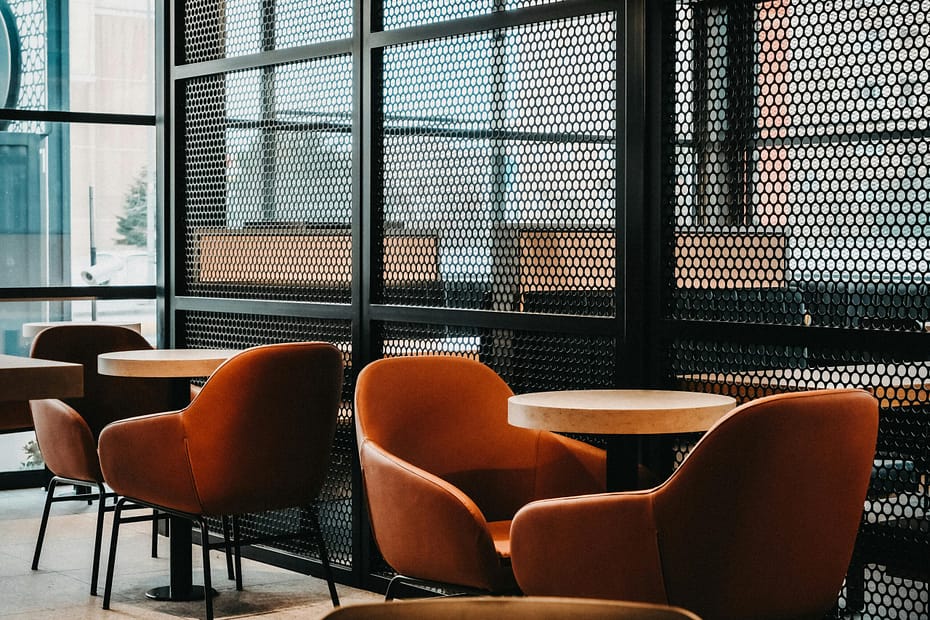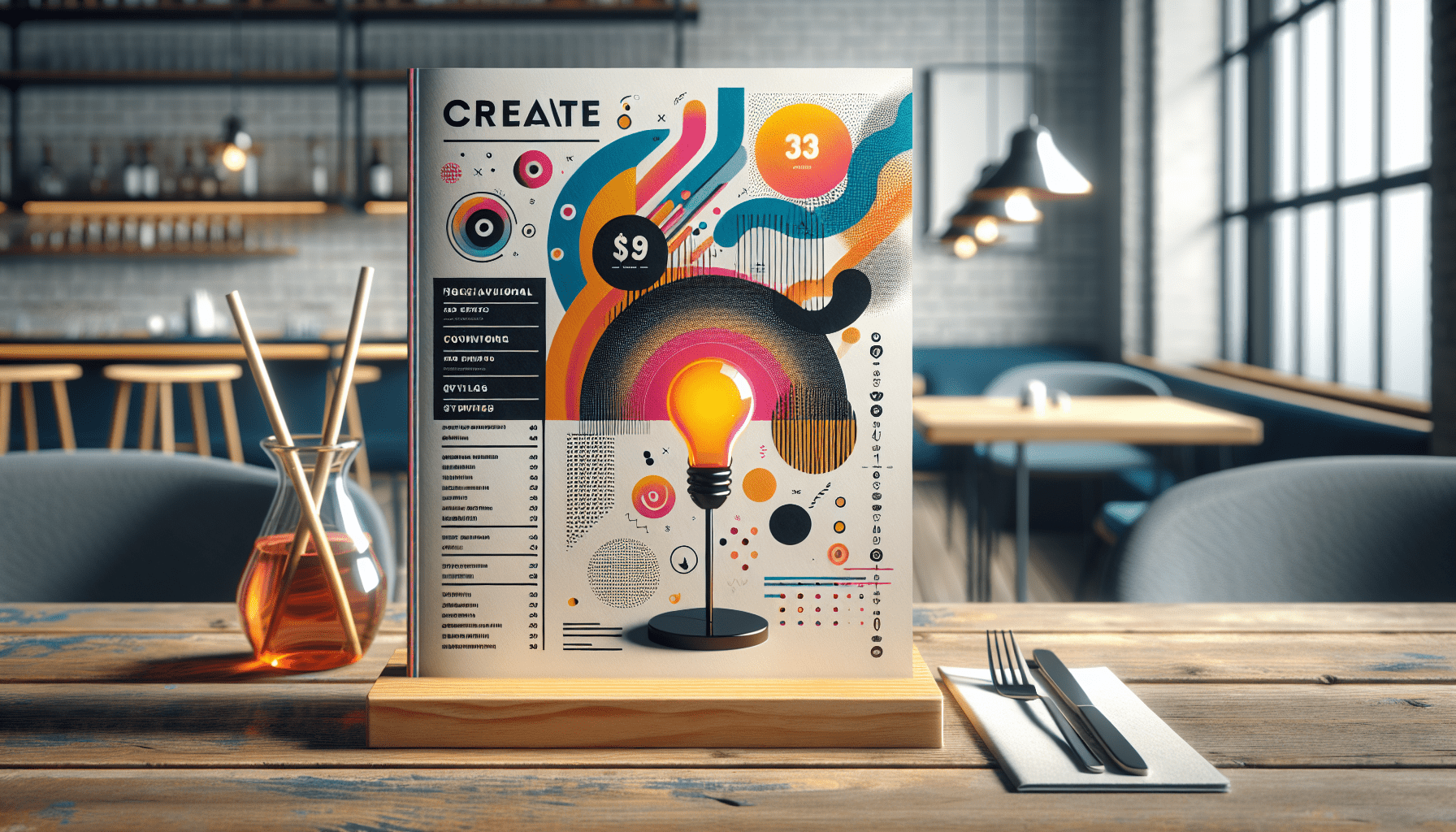Are you curious to know about the newest trends in restaurant menu design and pricing? Well, look no further! In this article, we will explore the latest innovations and strategies that restaurants are using to capture your attention and make informed choices. From eye-catching designs to creative pricing tactics, the dining landscape is evolving, and we’re here to keep you ahead of the game. So, whether you’re a foodie looking for a new spot to try or a restaurateur hoping to enhance your establishment’s appeal, read on to discover the exciting world of restaurant menu design and pricing.
Minimalist Menu Design
In recent years, minimalist menu design has gained popularity in the restaurant industry. This style embraces a simplistic and clean layout that focuses on essential elements and removes any unnecessary clutter. By using ample white space and a limited color palette, minimalist menus create a sense of elegance and sophistication. The emphasis is placed on typography, with bold and clear fonts guiding the eye through the menu. This design approach allows customers to easily navigate the menu and quickly locate their desired choices.
Innovative Typography
Typography plays a crucial role in menu design, and the latest trend is to incorporate hand-drawn and custom fonts. These unique fonts add a personal touch to the menu, creating a distinct and memorable visual identity for the restaurant. Mixing different font styles, such as pairing a sans-serif with a script font, adds visual interest and variety. Additionally, creative use of bold and italicized text can highlight certain menu items or sections, drawing attention to featured dishes or specials. Text can also be used as a design element itself, with playful arrangements and creative alignments adding visual appeal to the menu.
Unique Illustrations and Graphics
To make menus more visually engaging, custom illustrations depicting food and ingredients are being employed. These illustrations not only showcase the dishes but also add a touch of personality and fun to the menu. Playful and eye-catching graphics are used to draw attention to specific items or to create a cohesive theme throughout the menu. Additionally, illustrative icons are utilized to indicate dietary preferences, such as vegetarian or gluten-free options, or to denote allergens, allowing customers to easily identify the dishes that suit their needs. Geometric shapes and patterns are also integrated into menu designs, creating a modern and stylish aesthetic.
Sustainable and Eco-Friendly Menus
With a growing emphasis on sustainability, restaurants are incorporating eco-friendly practices into their menu designs. These practices involve using recyclable or biodegradable materials for menu printing, reducing the environmental impact. Furthermore, eco-friendly messaging is included on menus to inform customers about the restaurant’s commitment to sustainability. Menus made from recycled paper or printed with vegetable-based inks are becoming more common, demonstrating a commitment to reducing waste. Alongside this, highlighting sustainable sourcing and farming practices on the menu allows customers to make informed choices and support environmentally responsible businesses.
Interactive and Digital Menus
The digital age has ushered in a new era of menu design, with interactive and digital menus becoming increasingly prevalent. Quick Response (QR) codes are being incorporated into menus, allowing customers to access digital menus through their smartphones. This innovation provides a touchless and convenient way to browse through menu options, reducing physical contact and enhancing safety. Some restaurants are adopting tablets or touchscreen displays at tables, providing customers with an interactive ordering experience. Augmented reality (AR) is also being integrated into menus to elevate the dining experience by allowing customers to virtually preview their dishes or see them displayed in a virtual space. Additionally, real-time menu updates and customization options enable customers to personalize their orders and have a seamless digital dining experience.
Personalized Menu Recommendations
Restaurants are increasingly utilizing customer data and preferences to offer personalized menu recommendations. By analyzing customer history and preferences, restaurants can suggest dishes tailored to individual tastes and dietary restrictions. Whether it be vegetarian or gluten-free options, personalized menu recommendations enhance the overall dining experience by offering choices that cater to each customer’s specific needs. Moreover, returning customers can be provided with special menus that feature their favorite dishes or exclusive offers, making them feel valued and appreciated. To further cater to individual preferences, customizable menu items are being introduced, allowing customers to modify dishes according to their taste and preferences.
Pricing Transparency
To build trust with customers and ensure transparency, pricing transparency is a vital aspect of menu design. Restaurants are incorporating clear indications of prices for each item, avoiding hidden fees or charges that may surprise customers when their bill arrives. Additionally, itemized breakdowns of costs, such as listing the base price and any additional charges for extras or substitutions, are provided to customers. Pricing options for combos or add-ons are also presented, enabling customers to easily customize their orders with full knowledge of the associated costs. By prioritizing pricing transparency, restaurants foster a sense of trust and loyalty among their customers.
Adapting to Delivery and Takeout
In response to the increasing demand for food delivery and takeout, menu designs are being adapted to cater specifically to these services. Separate delivery and takeout menu designs are being created, allowing customers to easily locate the dishes available for these options. Prominent display of contactless ordering and payment options ensures a smooth and convenient experience for customers ordering remotely. Emphasis is also placed on packaging and presentation, as restaurants realize the importance of preserving the quality of their meals during transportation. Creative ideas, such as innovative packaging designs and temperature-controlled packaging, are being implemented to ensure that customers receive their food in the same condition as if they were dining in the restaurant.
Creative Menu Layouts
To stand out from the crowd, restaurants are experimenting with non-traditional menu shapes and sizes. These unique layouts capture customers’ attention and reinforce the restaurant’s branding. Incorporating interesting folds or cutouts adds a touch of novelty and showcases the restaurant’s creativity. Moreover, playing with the placement of text and images creates a visually stunning menu that guides the customer’s eye and highlights key information. Some establishments are even using storytelling or themed menus to create a more immersive dining experience, taking customers on a culinary journey through their menu.
Virtual Reality Menus
As technology advances, virtual reality menus have emerged as a cutting-edge trend in the restaurant industry. Virtual reality platforms offer immersive dining experiences, allowing customers to explore virtual environments and interact with menu items in a simulated space. With virtual tours of the restaurant and the food preparation process, customers can get a glimpse behind the scenes and feel a greater connection to the establishment. Integration with online ordering and delivery services enables customers to order their desired dishes directly from the virtual reality menu, further enhancing convenience and accessibility.
In conclusion, the latest trends in restaurant menu design and pricing focus on simplicity, innovation, sustainability, personalization, transparency, adaptability, creativity, and technological advancements. From minimalist layouts and innovative typography to unique illustrations and graphics, menus are evolving to engage customers visually and enhance their dining experience. Eco-friendly practices and sustainable messaging reflect a growing concern for the environment and allow customers to make informed choices. The digital age brings interactive and digital menus that offer convenience, personalization, and real-time updates. Meanwhile, personalized recommendations, pricing transparency, and adapting to delivery and takeout address customers’ individual needs and preferences. Creative menu layouts and virtual reality menus immerse customers in a unique dining experience. By embracing these latest trends, restaurants can captivate their customers, thrive in a competitive market, and foster lasting relationships with their patrons.




